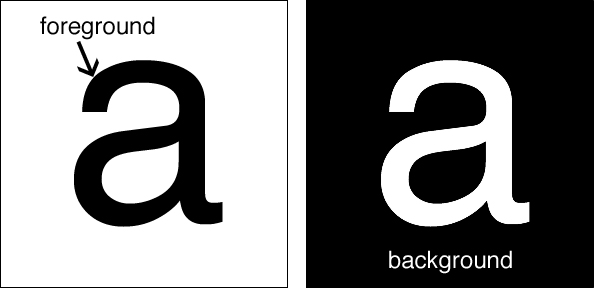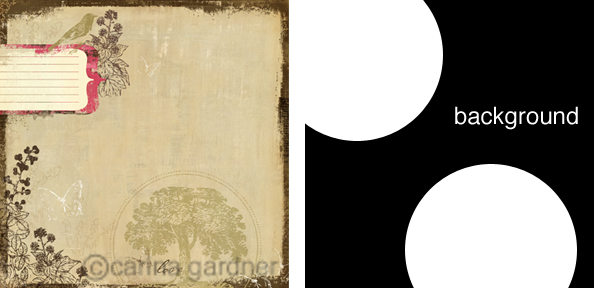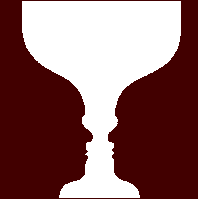I think you’ll like this first lesson…it’s quick, but has lots of examples, which is always fun! The best part is once you understand background and foreground and how it works in design relationships, you will be able to see it in your scrapbook layouts, designs, or projects. It will give you a new sense of how space works FOR and AGAINST you.
Foreground (also called figure-ground) is essentially the focal point, the area in the front of a space. The background is the area that surrounds that focal point. This can be easily shown with a letter.

Many times it is easier to see the background if the color is reversed out. As a designer, you have the be very aware of what the background is doing (also called negative space) because that may help you rearrange elements so that the foreground or figure is remembered BEST and the background is just that…background.
Take a look at this example.

This is a paper from my Bella BellaTM Collection at My Minds Eye. I’ve blocked out the background and foreground for you so you can see what I did. Even though there are several elements in this page, the two focal points both help create a dynamic background. The diagonal works both ways…from the bird to the tree as well as the blank space at the top moving between the two objects. It sort of makes an x. Do you see it? It’s what keeps this balanced. It’s not PERFECTLY balanced, which is what would have happened if the tree element had gone in the right-hand corner. Instead, it is moved away from the corner to give it a little more interest and to create that funky background-arrow (the negative space).
Many designers like to play with this idea of foreground-background. Check out this clip of 300. I am not promoting the violence (because wow, this is a bit violent for me!), but it does a great job of showing off (and extenuating) the foreground-background relationship. Be sure to pay attention when objects appear as one thing and then are transformed into another… Just watch the first 30 second to a minute of this and you will get the idea.
Did you notice the horse hair into grass (take a second look!) or the landscape into a face and helmet. There is such a high contract between the background and foreground in this that it makes the relationship prominent.
Here’s another one I love (notice how I am showing a lot of black and white? The relatioship is easy to see when there is such a strong contrast). Here’s Lemony Snicket’s end credits:
Designers really push the limits when they create illusions with the foreground and background. Check this out:


These is a classic examples of foreground and background used to create optical illusions. Do you see the young lady and old lady in the second one? I had to squint and squint to see the old lady and I even had to flip it in photoshop so I could stop looking at the young lady. Hopefully, you had better luck than me! (to see more images like this, go to
http://www.azhearing.com/optical-illusions.htm#yyy and take their test.
Okay, hopefully you get the gist of foreground-background. Just keep the background in mind as you build your images, patterns, and more.